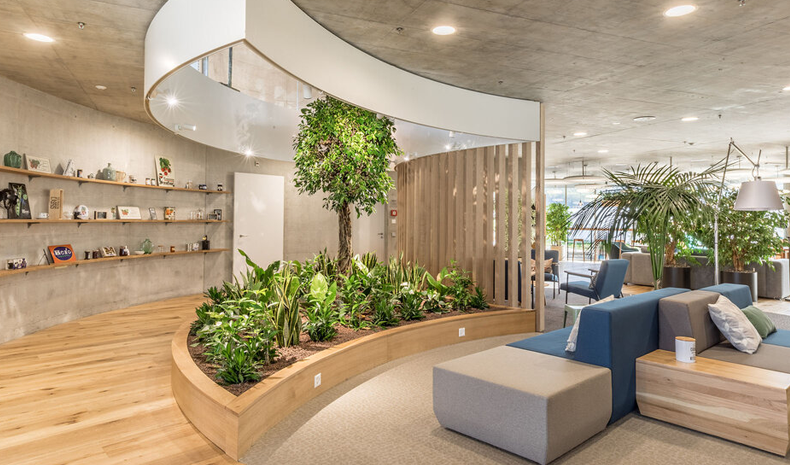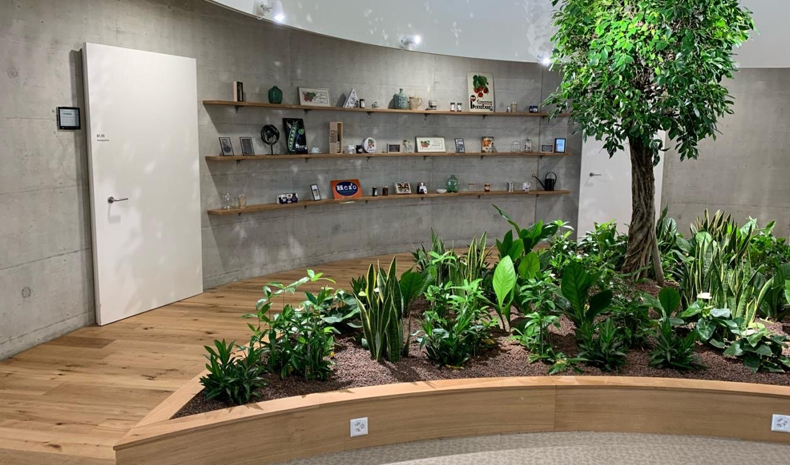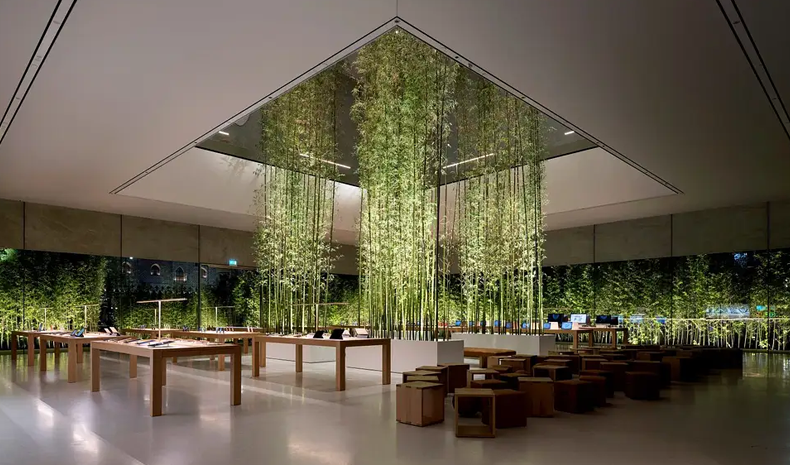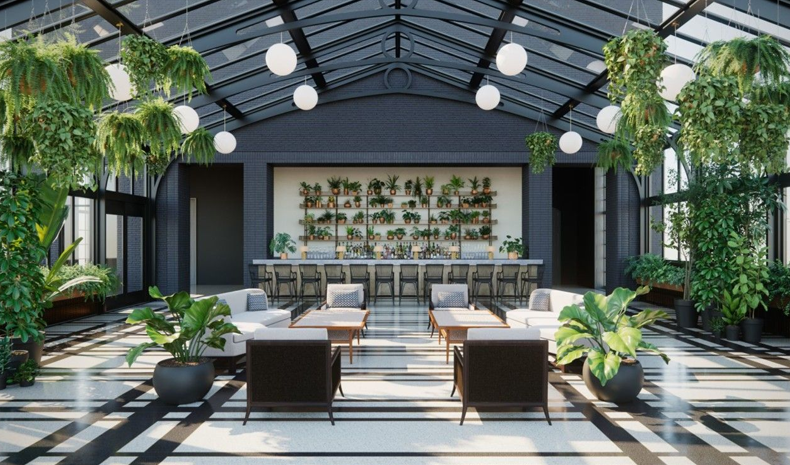The following is a guest article from Rose Morrison from Renovated. Submit your own article or building project to be featured on the BIMsmith Blog.
Biophilic design has become much more popular as of late. Although it’s a defined style in its own right through relying on principles of incorporating nature into a space, there are many different directions you can go with it.
Many architects and designers find that biophilic design allows them to use the given space to its full potential and opens the doors for creativity, community, and productivity. It’s a perfect example of a style that connects to nature, as it utilizes the natural elements of the Earth. It works with both people and the environment with an aim to create harmonious and healthy spaces.
There are so many benefits and hallmark traits of biophilic design that work together to create harmony. From the positive impact it can bring to mental health to the stylistic advantages, biophilic design gets back to basics and paves the way to the future for many.
What is Biophilic Design?
Before you learn about all the benefits that biophilic design can bring into a space, it helps to learn exactly what makes biophilic design a distinct style. Biophilic design is a design that seeks to increase human connection to nature and the natural world. Biophilic design provides direct experiences with nature, not simply making use of natural imagery or isolated facets of nature out of context. Often, biophilic design is categorized by its use of indigenous natural elements, light, and its mindfulness of ecosystems and weather that contribute to the environment around a given structure.

Image Source: Biofilico
Biophilic design isn’t the simple inclusion of natural ideas or concepts, but the careful curation of an environment that works with existing nature in order to create systems of coexistence. This involves using eco-friendly materials, appropriate landscaping tools, and creative solutions to incorporate nature carefully and properly.
Biophilic design prioritizes the health, fitness, and wellbeing of humans, as well as the ecosystems around them. It fosters an emotional and physical connection with nature and can offer a variety of benefits on a personal level.
Common Traits of Biophilic Design
You may wonder how natural concepts are applied in design practice. Biophilic design isn’t about the idea of nature — instead, it directly works with it. It has plenty of unique traits that make it a style in its own right, but it’s also open-ended enough to use it in conjunction with other techniques, too, such as modern or midcentury. Here are a few traits that tend to be present in most uses of biophilic design:
- • Plants incorporated into the space
- • Utilization of local materials
- • Natural light
- • Open airflow
- • Natural shapes and patterns
- • Architecture that works with the existing landscape
- • Nature-based colors and textures
- • Presence of water

Image Source: Biofilico
While not every instance of biophilic design will involve every one of these traits, they tend to be some of the most common. They can make the result feel even more natural.
1. Increases Productivity
Whether you’re looking into biophilic design ideas in workplaces, schools, or even coworking spaces, connection with nature in this way has been proven to increase productivity. Biophilic offices can see results of 8% increases in productivity, and schools that implement biophilic design often experience improved attendance, test results, and even learning rates of 20-25%. This is likely due to the positive mental association with nature, which releases energy and helps aid focus.
2. Improves Moods and Mental Health
It’s no secret that plants have been scientifically proven to uplift moods and help make people happier, and including them in the elements of design in any space can serve to do just that. Including natural design elements and incorporating nature into areas can help energize people and release happy chemicals in the human brain. Plus, good moods tend to be perpetual, so leaning on design elements can improve overall happiness and mental health over time, especially as those spaces stick around.
Biophilic design can even have a positive impact on long-term mental health beyond the momentary boost from plants. For example, open concepts, nature in design, and natural light can help to decrease stress and improve mental health. Biophilic principles can even reduce bad moods, anxiety, and depression.

Image Source: Magpie Creative Co.
3. Creative Freedom and Community
When it comes to the creative freedom that biophilic design can bring, there are plenty of ways to look at it. First, within the actual design process, many find that biophilic design offers so much more creative freedom than what they may be used to. Because of the natural elements involved, each situation and project can be unique. In addition to the design itself, once a biophilic space is functional and in use, creativity increases within that space. It increases melatonin production, which increases energy levels, releases happiness hormones, and regulates body clock cycles. This can help with creativity when exposed to the space.
Within the space itself, much of the creativity found could come from how the community is built through the design. Many biophilic areas encourage collaboration through open spaces and uplifted moods. Plus, increasing productivity and creativity in work and school environments can facilitate more effective collaboration. It helps people lean into good attitudes and stick around in a space, where they’ll find more interaction and connection with others. Overall, biophilic design can work to create thriving creative communities.
4. Longevity
On the design end, biophilic design can age gracefully. When you work with the elements of nature, the creative solutions and ideas you come to won’t be passing fads. Instead, they’ll be personal and more connected to the surrounding environment, which can help them feel more unique and individualized. In the physical sense, natural elements and materials are also more likely to last and develop with time in ways that are organic and stylish. Biophilic design is made to last.

Image Source: Terrazzo & Marble Supply
Biophilic Design and Its Traits and Benefits
Biophilic design is all about using the natural surroundings and ideas and turning them into spaces that feel almost as alive as the Earth. While there are principles in place to follow to ensure that you receive the full benefits it has to offer, it’s also about exploring, connecting, and doing what feels natural.
Biophilic design involves beautiful settings, light, natural elements, and organic designs, but it’s about so much more than that, too. Biophilic design can create beautiful spaces that improve mental health, explore creative avenues, and foster community.
Biophilic design is about getting back to basics and connecting with nature, and that can bring an array of benefits you may have never thought possible. While it may be simple, it could be here to stay for years to come.
--
Rose Morrison
Rose Morrison is a construction and design blogger and the managing editor for Renovated. To read more posts by Rose, check out her blog.














